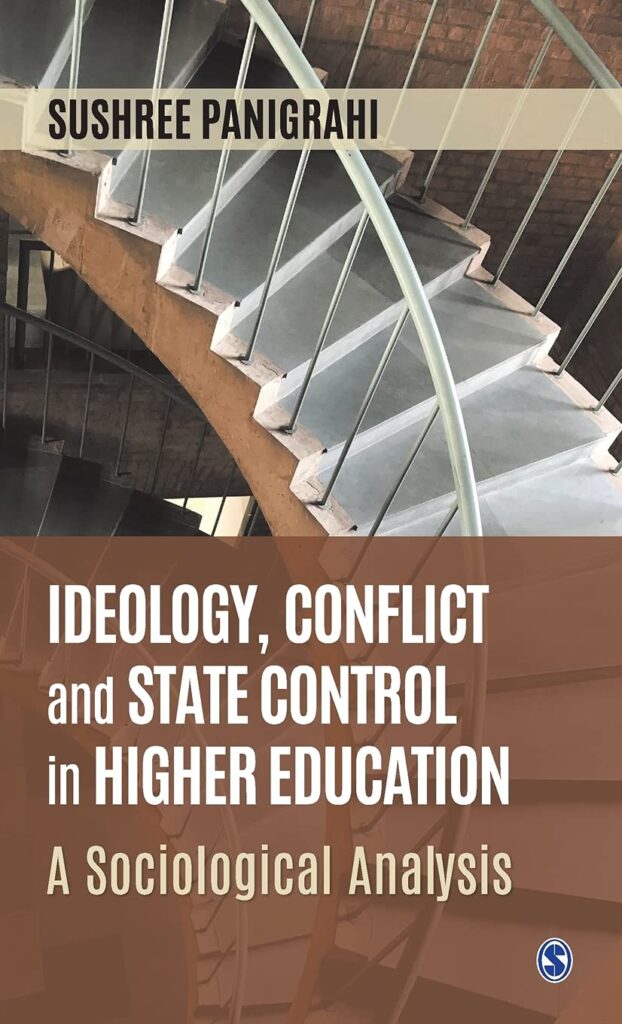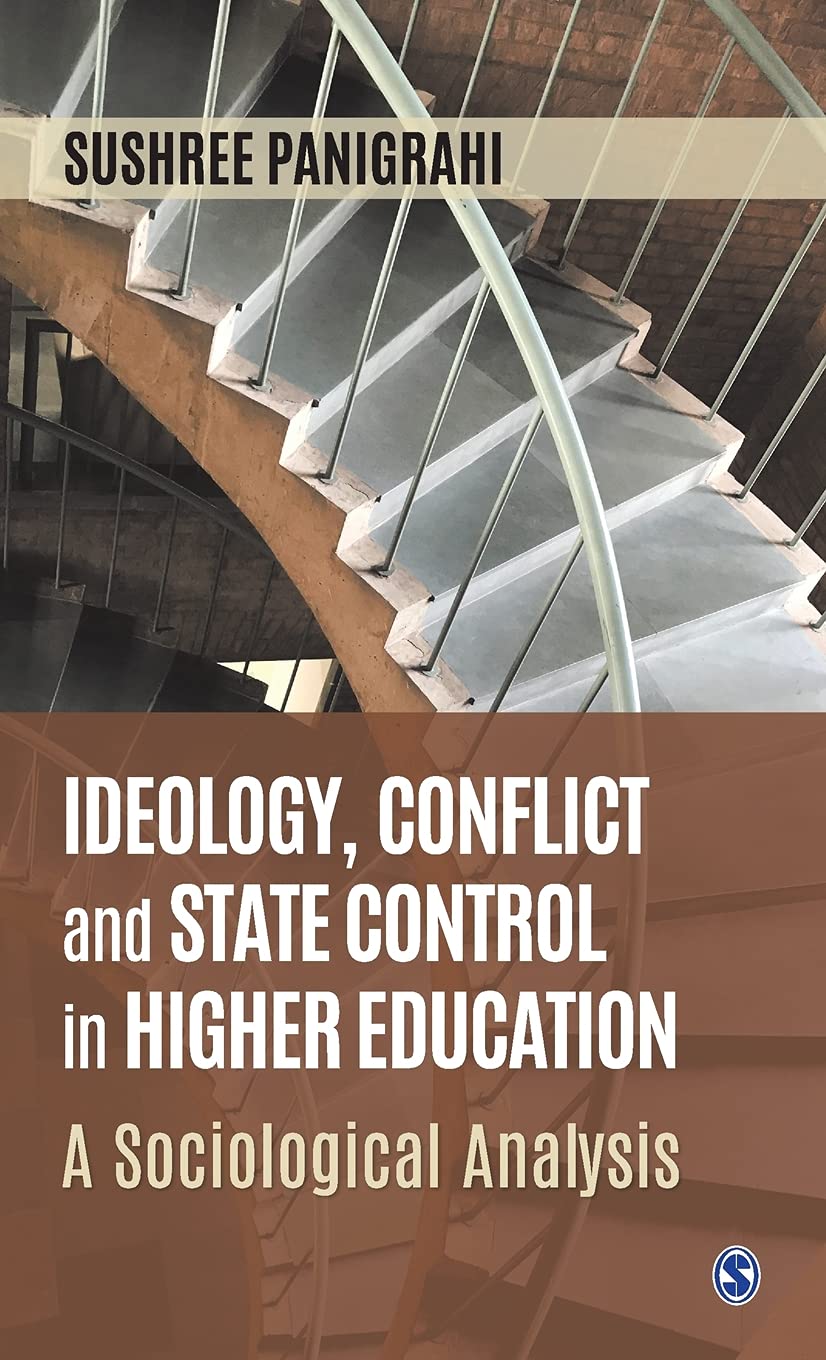
As the name of the book suggests, Ideology, Conflict and State Control in Higher Education: A Sociological Analysis by Sushree Panigrahi (published by Sage in 2021) talks about the role of the state and ideology in higher education. It looks at three main actors in higher education – the state, teachers and students and attempts to provide an account of the nature of the relationship between these actors in a liberal democracy. This relationship has been explored by using the concept of ideology. The author clearly states in the introduction that “The core purpose of this book is to locate the role of ideology in everyday life, especially that of students and teachers” (2022: 2). She moves away from a narrow understanding of ideology from a political perspective. She defines ideology as a worldview and seeks to understand this worldview from the perspective of students and teachers. The author has taken twenty-one public universities from various regions of the country, mostly located in the urban or semi-urban areas for the study. Students and teachers from the science and humanities stream have been interviewed to understand if the difference in the discipline affects one’s worldview. The book presents the views of teachers and students from various universities and their understanding of ideology, student activism, issues in higher education and so on.
The book consists of seven chapters including the introduction and the conclusion. The introduction provides the readers with a theoretical understanding of the idea of education and university and proceeds to identify various issues that education in general and the university, in particular faces in the current society. It helps readers understand the contemporary issues that plague higher education today and sheds light on the complicated relationship between politics, ideology and education. The author has drawn from Gramsci’s understanding of ideology, Giroux’s critical pedagogy, Manheim’s work on ideology, and Berger and Luckman’s views on the social construction of reality, among a myriad of other scholars to highlight this relationship.
In the second chapter, students have been asked about their views on rewriting history books, the meaning of ideology, and the role of nationalist icons and national anthems to analyse their critical thinking capabilities. The third chapter provides a historical as well as contemporary understanding of student activism and politics in society. It provides perspectives from both students and teachers about the importance of student unions in the respective universities and thereby seeks to answer the larger question of ‘Should students be apolitical?’
In the next chapter, the author discusses issues of discriminatory rules (admission or hostel related), and social mobility through reservation. The fifth chapter discusses at length about various problems that plague higher education such as fee hikes, employability, privatization, recruitment of teachers, infrastructural issues, lack of funds and scholarships and so on. The author dedicates the last chapter to the teachers and focuses entirely on their understanding of ideology and how it affects their relationship with other faculties, students and the state.
The book covers a wide range of issues affecting higher education, and it has done justice in discussing these issues, systematically. Through these discussions, the reader is continuously made aware of the continuous rise of jingoistic nationalism in higher education through the interference of the state, in recent years in India. For instance, the author argues “It is apparent that the state and education are not two separate binaries; rather, the state constantly uses the education system to reach out to students and propagate a certain imagery of the country” (2022:79). It further urges the reader to evaluate the role of education in society and warns us about reducing education to a utilitarian perspective which is prevalent in this neo-liberal economy. Thus, this study seeks to answer the larger question on the purpose of education.
This book is an extremely important addition to the existing works on the sociology of education since it asks pertinent questions related to the social role of education in a society, the space provided to student activism and the extent of interference of the state in public universities and by extension in education. It addresses questions on the nature of intellectual and creative freedom that teachers and students should be provided in a university. It helps in understanding the role of students as citizens in a democracy. It raises much-needed questions on what role a university should play in the development of critical thinking among students, which will help create a just society.
***
Garima Rath is a PhD Research Scholar in the Centre for the Study of Social Systems (CSSS), School of Social Sciences, Jawaharlal Nehru University (JNU).
